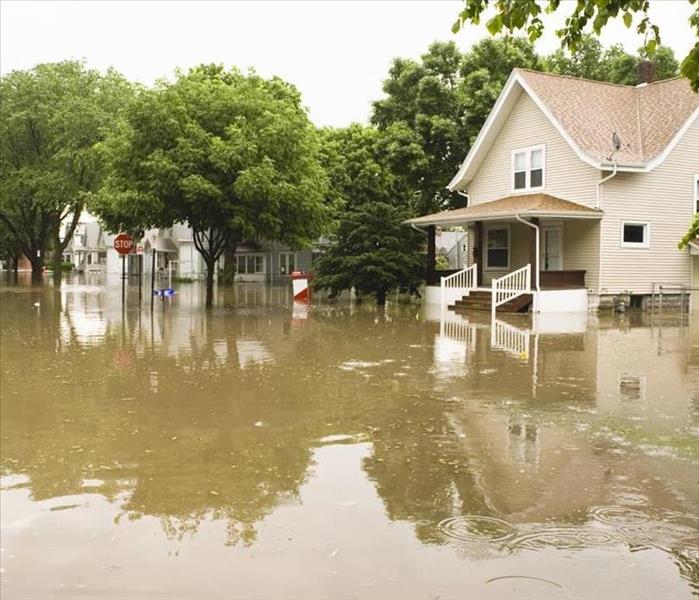Flood Insurance
3/9/2022 (Permalink)
This past weekend heavy rain fell in our area. With the ground still frozen and unable to absorb the rain, many people experienced wet basements and even flooding.
Water will gravitate to the lowest possible point. When the ground is frozen, rainwater can flow across the ground like a river towards that lowest possible point. If your home is in its path, that water may enter your home or basement, especially if that flow encounters a basement window, egress window or other opening.
In another blog post we discussed how important it is that the ground around your home or business is properly pitched so that water flows away from the structure and not towards it, to prevent water intrusion. In this blog post we will talk about the financial implications of water damage incurred this way.
For the purposes of insurance, “flood” means any water outside the structure that flows inside at ground level. This past weekend we received many calls from homeowners experiencing a water loss in this manner. The problem is that standard homeowner’s insurance policies do not cover water damage as the result of flooding. Homeowners can purchase a sump pump rider that allows for coverage of water loss as the result of a failed sump pump. But even a sump pump rider does not cover actual flooding.
For flood water to be a covered loss, homeowners must purchase flood insurance. According to Wikipedia, “Flooding is defined by the National Flood Insurance Program (NFIP) as a general and temporary condition of partial or complete inundation of two or more acres of normally dry land area or two or more properties (at least one of which is your property) from: Overflow of inland waters, unusual and rapid accumulation or run off of surface water from any source…” It is estimated that only about 20% of homes at risk for this type of flooding are covered by flood insurance. For more on federal flood insurance, visit:



 24/7 Emergency Service
24/7 Emergency Service
